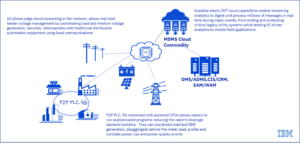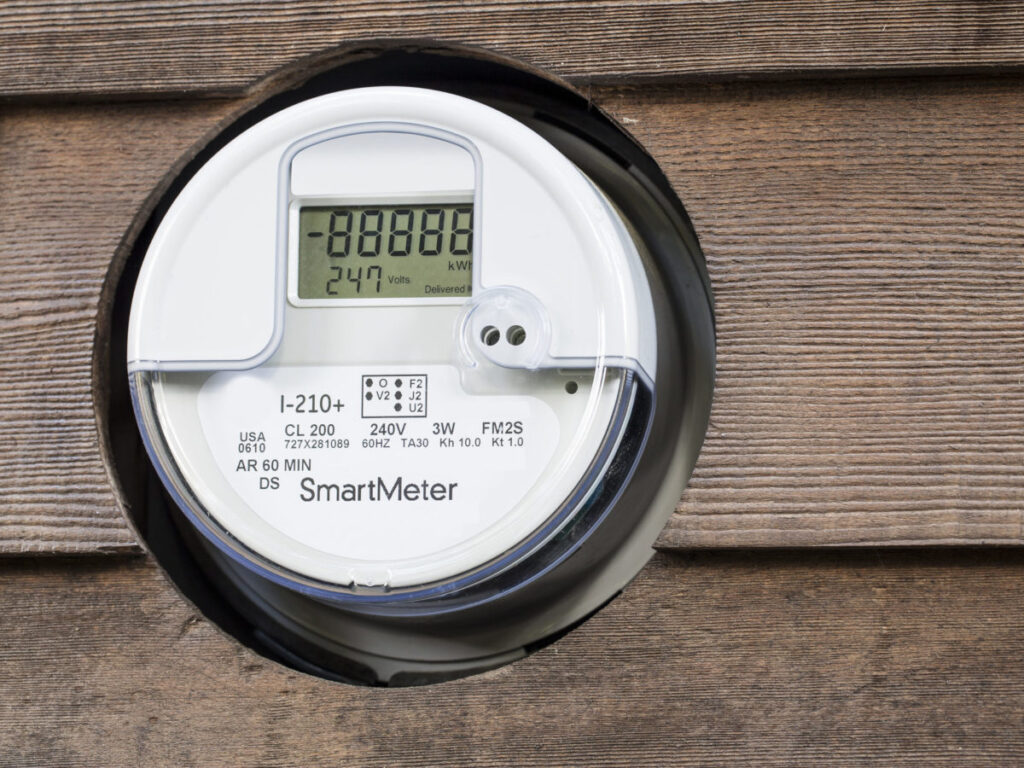AMI – Advanced Analytics Opportunities

To be successful today, utilities should implement transformative customer-facing and grid-facing initiatives using advanced analytics on AMI data.
Advanced Metering Infrastructure (AMI), commonly called Smart Metering, is a solution that uses digital meters, two-way communications networks and data management devices. These devices collect, transmit and record electricity consumption data in daily or shorter intervals. They also can provide significant additional data that can be used to better inform utilities of customer behavior and to support utility personnel in grid operations.
AMI has been a key tenet to grid modernization. Although smart meters have become widely adopted, many utilities have not taken advantage in order to fully exploit the opportunity to use the available AMI data through analytics. Incorporating analytics and exponential technologies into AMI is resulting in next-gen capabilities—what is becoming known as AMI 2.0.
Analytics Drivers for AMI Data
The energy industry is facing some very transformative challenges. There is a growing energy demand, combined with the adoption of environmental policies and regulations to combat climate change, which according to scientists, is the result of carbon emissions. The adoption of sustainability practices by companies, in their attempt to be socially responsible, requires that electric utilities be a major player in environmental stewardship, and to rethink their power generation and distribution of electricity. Other priorities that need to be addressed include consumer expectations for greater reliability and higher quality for digital devices, and ensuring security against cyberattacks from domestic or global threats.
The Transition to AMI 2.0
Utilities with legacy AMI have the basic capabilities but typically have limited data analysis to provide additional information or suggest programs that would benefit the consumer. For utilities that have implemented AMI but are not early adopters facing end-of-life decisions, efforts should focus on optimizing their legacy AMI. This requires an increasing integration with legacy systems to provide end-to-end customer-facing and grid modernization solutions.
Next Generation AMI, AMI 2.0, is focused on creating business value through exponential technologies using AMI data. These technologies include 5G, edge computing, IoT and artificial intelligence (AI). Deployment of open cloud architectures through hybrid multi-cloud allows for deep integration of legacy systems and allow AI to take full advantage of these exponential technologies. 5G networks and edge computing capabilities within the latest smart meters and other devices will enable real-time assessment of grid conditions, improved management of Distributed Energy Resources (DER), and enhance customer engagement through real-time energy usage at the device level. The transition from Legacy AMI to AMI 2.0 will be transformational.
The next generation of utility networks will be powered by edge computing over 5G networks enabling real-time assessment of grid conditions.

Advance Analytics (AMI 2.0) Use Cases
To be successful, today’s drivers require utilities to implement transformative customer-facing and grid-facing initiatives. Advanced analytics, available through AMI 2.0, is critical to meeting these transformative initiatives.
Customer-facing use cases: Customers are becoming prosumers and have much higher expectations from their electricity provider–ranging from better reliability, to helping with their energy consumption management, to providing analyses to identify services/offering that best serve the customers’ needs. Utilities have realized that customer data analytics, customer-targeting and rate recommendations are some of the top use cases for smart meter data insights. The AMI 2.0 exponential technologies of augmented intelligence/machine learning, edge computing, IoT and 5G networks make it possible to quickly process AMI data combined with external data such as social media, at a much more granular level. This allows for the disaggregation of data for rate design, demand-side management programs, rate design planning, and providing customers with rate recommendations.
Grid-facing use cases: Along with greater customer demands and expectations of their energy providers, the adoption of environmental policies/regulations to combat climate change and sustainability, and an increasingly competitive market requires utilities to rethink their power generation and distribution of electricity. This requires the implementation of grid-facing initiatives/adoption of new business models. Resiliency, reliability, efficiency and security in grid operations will be key priorities moving forward.
Decision support for grid optimization and DERs will be based on predictive analytics fueled by near real-time AMI data.

Conclusion
Whether they come from customer- or grid-facing drivers, many of the resulting benefits achieved through advanced analytics and exponential technologies are symbiotic. Successful utilities typically embrace digitization through three patterns: (1) Digitizing Assets, (2) Digitizing Interactions and (3) Digitizing Grid Operations. Utilities must embrace all of these digitization patterns to various degrees, along a timeline that supports the new business model.
To learn more about IBM Consulting and solutions to support your energy and utilities business, please contact Frank Hoss, frank.hoss.jr@ibm.com
Jason Kinslow and Hazir Ghayouri are both partners for Energy, Environment & Utilities Industry, IBM Consulting. Frank Hoss, Jr. is Associate Partner, Energy, Environment & Utilities Industry, IBM Consulting.





